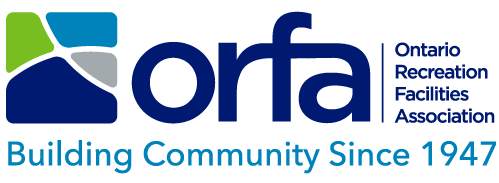- ORFA Home
- Resource Centre
- Technical Corner
- Recreation Facility Fire and Life Safety
Technical Corner
Recreation Facility Fire and Life Safety
July 21, 2023
As children, most of us were introduced to fire safety in school. Educational facilities were once high-risk locations as they were often the largest buildings in a community that housed a high number of children with heating systems that were poorly designed and in buildings that had a significant level of combustible materials. Preparation for evacuation was an important part of the teacher’s responsibilities. As time passed, practice such as allowing smoking in public buildings stopped and architects embraced new construction materials and methods as well as fire suppression equipment that would automatically activate if required. The responsibility of evacuation remained an important part of preparation, but the real responsibility was shifted to building operational staff to maintain the original design, construction materials and fire response equipment. Responsibilities that also shifted to all other public facilities as they were constructed. The recreation facility industry formed part of this landscape.
The evolution of recreation facility design and construction has been significant over the past 50 plus years. Fire which was once the only real risk has been replaced by a variety of other potential life safety challenges that facility management must consider and be prepared for. Aging infrastructure is a much higher risk than fire in creating emergency situations with the potential for a noxious or toxic gas leak being the next level of emergency planning to be considered. Communities have also invested in emergency services that now allows immediate emergency response by highly skilled individuals in many communities. If an emergency event does occur in a facility, management can expect a post incident forensic audit of the level of preparation of all staff under the event. Proactive facility management will build in fire and life safety planning into their operational and training plans before an emergency event. The goal should be to be deemed competent in this responsibility if audited post emergency event.
Key areas of responsibilities that can be evaluated by facility management to determine the level of preparation for an emergency include, but are not limited to:
- Reviewing all facility emergency plans (policies and procedures) and confirming that they are up to date
- Confirm that all staff are properly trained and prepared to respond to all emergency type events
- Ensure that emergency response is built into all facility contracts so that organized users are aware of their responsibilities and ready to act if required
- Asking the local fire safety officer to evaluate the operation and provide guidance on how the operation could improve
- Having a professional analysis of existing fire protection systems and equipment to determine if an upgrade should be considered – this should form part of the departments asset management planning activities
Consider if ever called into question the evaluation of a facility manager by any authority who discovers that these regular activities are being undertaken. ORFA is committed to investing in industry leading training and resources to assist our members in these responsibilities. ORFA’s building and operational courses explore the legal responsibilities as well as industry best practices associated with emergency preparation and planning. These opportunities and tools are offered as a benefit of membership. How they are used are left with each operation to consider as part of their needs and responsibilities.
Comments and/or Questions may be directed to Terry Piche, CRFP, CIT and Director, Training, Research and Development, Ontario Recreation Facilities Association
|
Note: The publisher, (Author(s)/General Editor(s)/Licensor(s)) and every person involved in the creation of this communication shall not be liable for any loss, injury, claim, liability or damage of any kind resulting from the use of or reliance on any information or material contained in this communication. While every effort has been made to ensure the accuracy of the contents of this communication, it is intended for information purposes only. When creating this communication, none of the publisher, the (Author(s)/General Editor(s)/Licensor(s)) or contributors were engaged in rendering legal or other professional advice. This communication should not be considered or relied upon as if it were such advice. If legal advice or expert assistance is required, the services of a competent professional should be sought and retained. The publisher and every person involved in the creation of this communication disclaim all liability in respect of the results of the any actions taken in reliance upon information contained in this communication and for any errors or omissions in the works. They expressly disclaim liability to any user of the work. |
